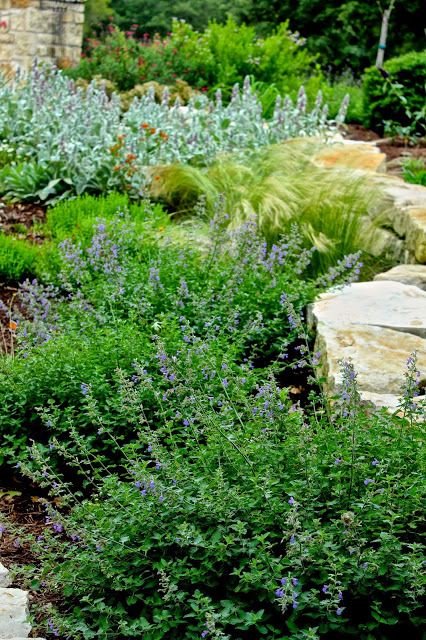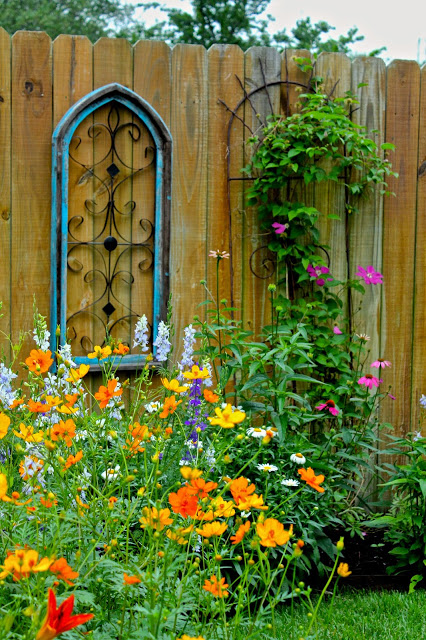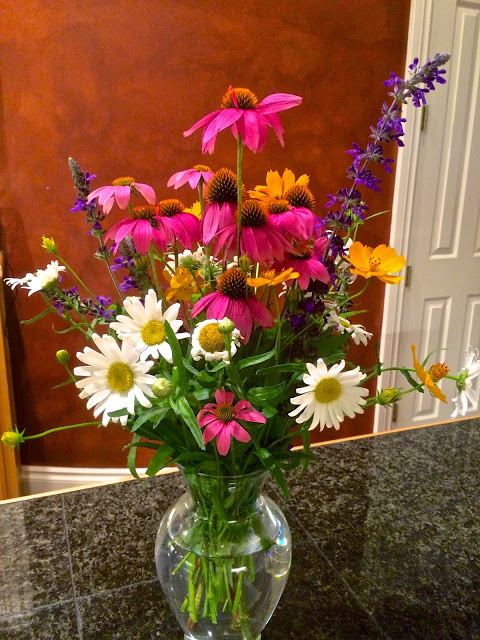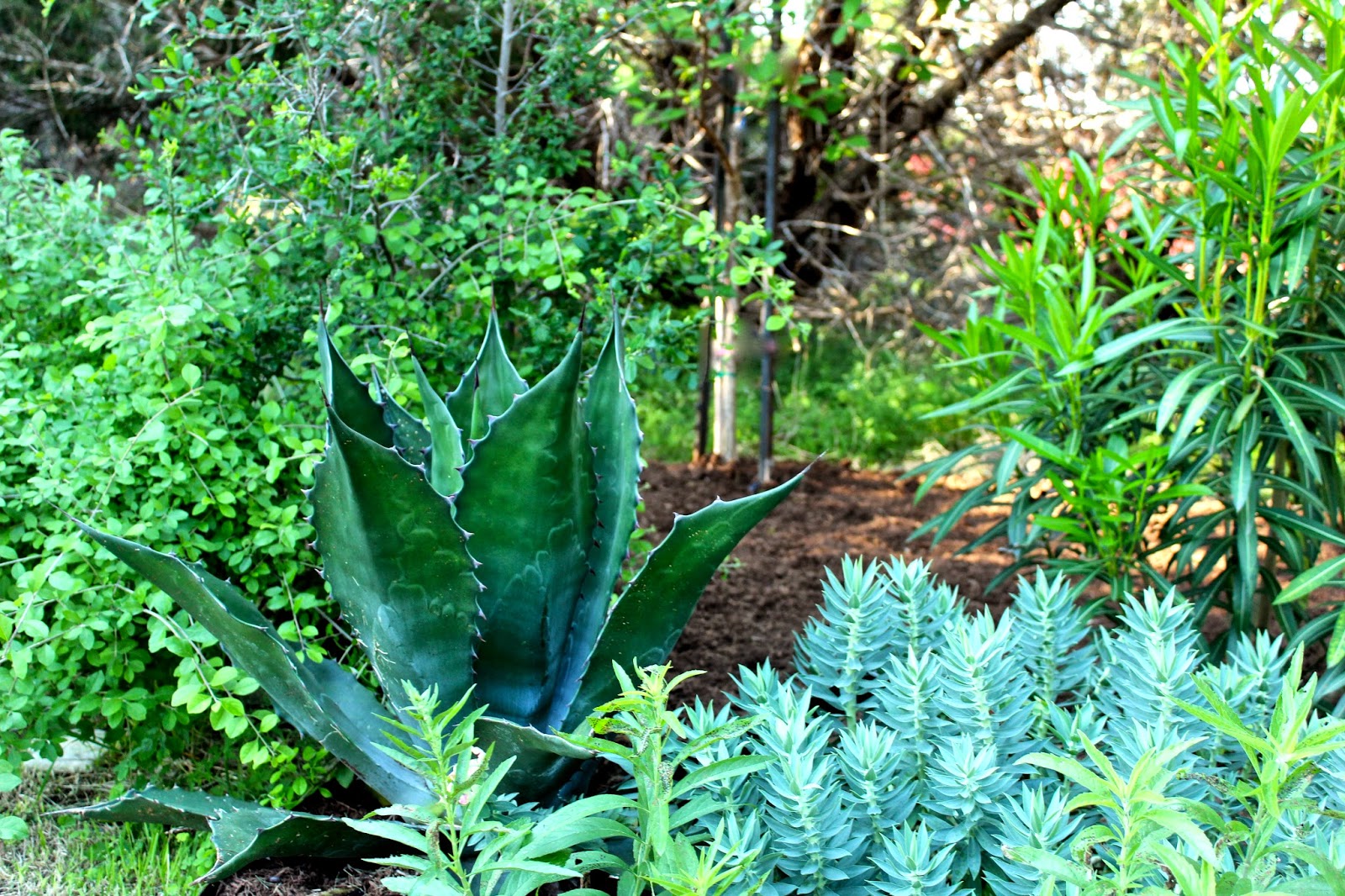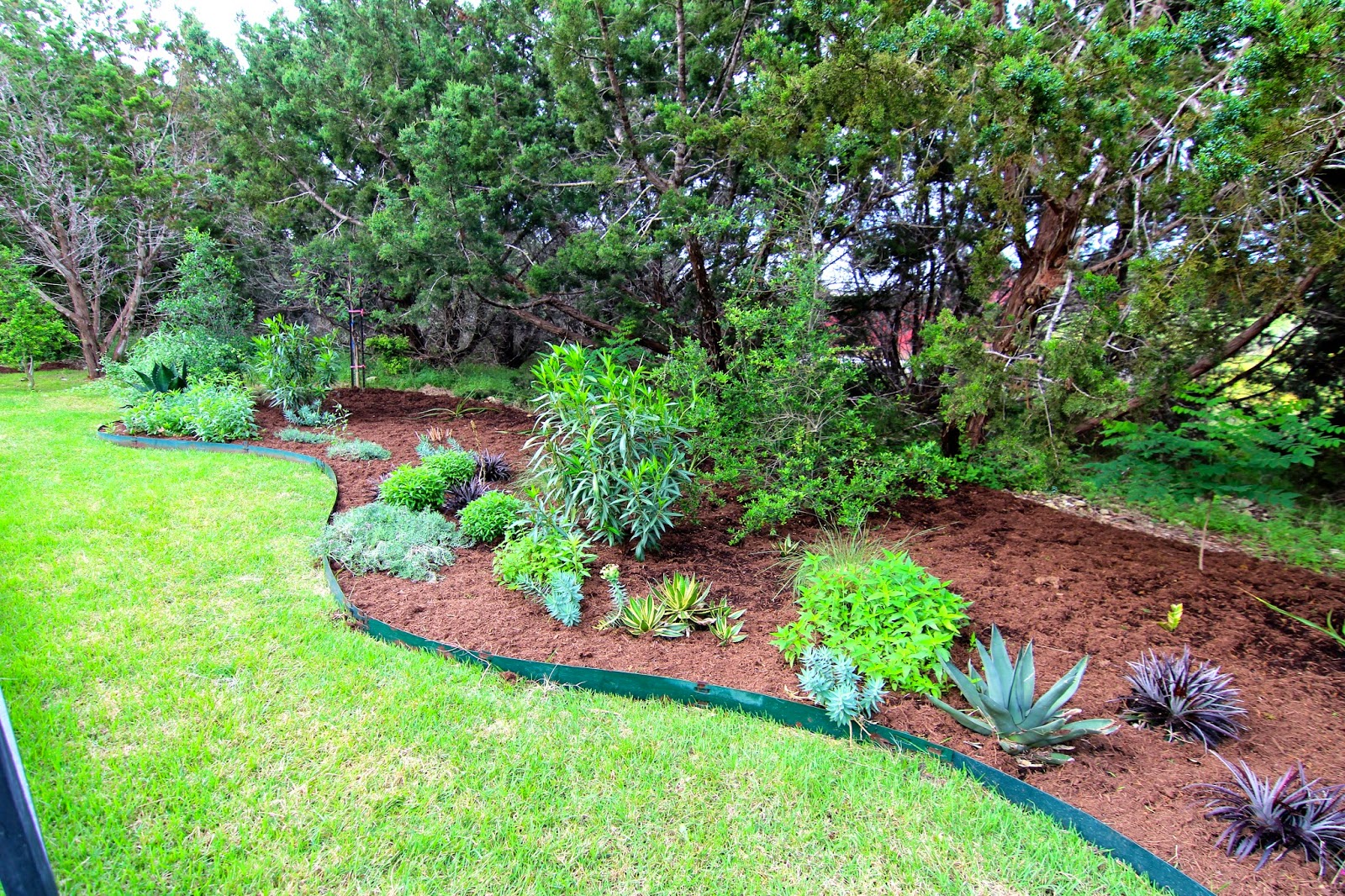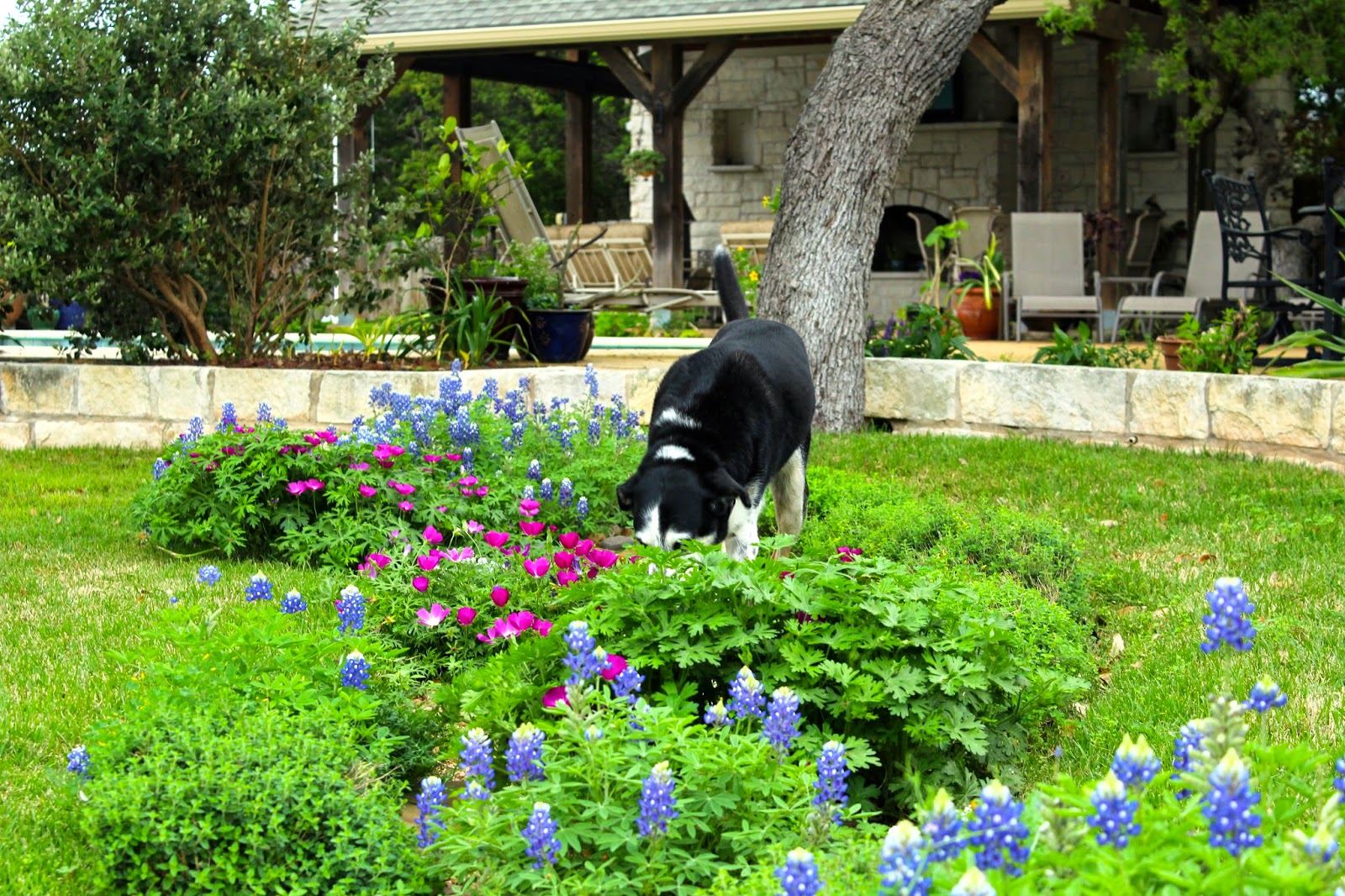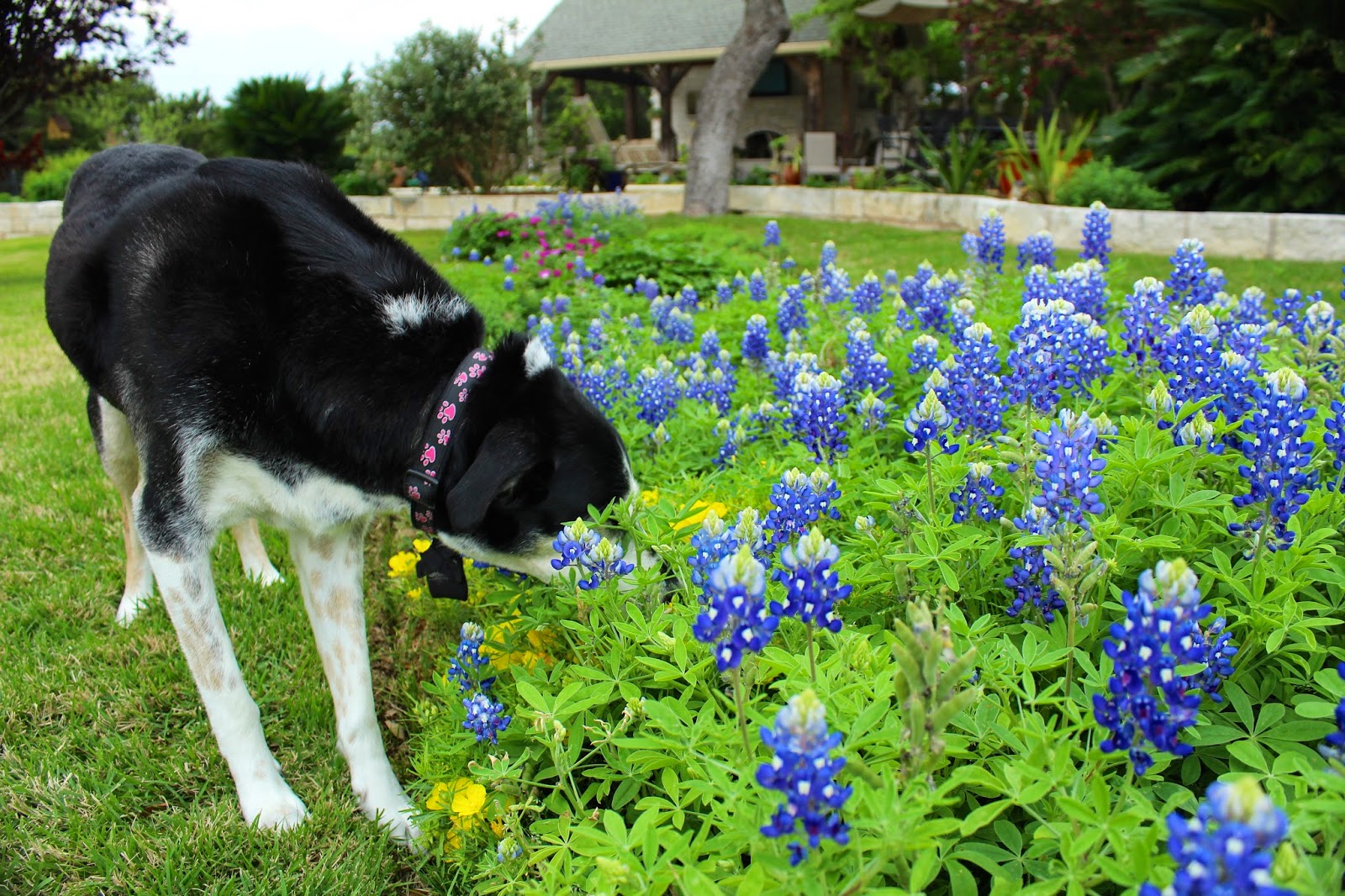El Nino is quenching the garden’s thirst…
Our devastating drought has altered the state of our gardens here in Central Texas and it’s changed our mindset, too.
We’re not used to rain. Not a little rain, not a lot of rain. We’ve had so much rain here this month that we don’t know what to do with it.
There’s so much green in my garden that I have to wear shades to walk through it. My plants would now like a little sun to shine as well, but they’ve never been quite so lush.
A ribbon of catmint, Mexican feather grass and lamb’s ears lines the front of this Southwest cottage-style bed.
The lamb’s ears make a dramatic statement when they are all standing at attention in full bloom.
The black and blue salvia and lingering bluebonnets echo the blue in the large ceramic pot in the front bed.
Soft and spiky plants share this bed, providing sculptural interest and contrasting textures. Soon the color of Mexican limelight salvia and orange tecoma stans will add to this palette.
Beautiful blooms are vying for my attention in the cutting garden – ready to come join me in the house!
Ditch lilies, Klondike cosmos, larkspur, shasta daisies, purple coneflowers and clematis are all showing off in the cutting bed.
This morning, I picked this bouquet for my mom and dad, who are celebrating their wedding anniversary today. But tornado warnings and unrelenting thunderstorms kept me home this afternoon and they had to enjoy them via a photo. So, now we can all enjoy them.
New spring plantings are growing and the caladiums are shooting up out of the ground as fast as I can count them.
I’m smitten with the Mexican bird of paradise, Caesalpinia Mexicana, and its exotic and wispy blooms.
 The brilliant purple flags of these Amistad salvia provide a backdrop for senorita Rosalita cleome, dianthus and yarrow.
The brilliant purple flags of these Amistad salvia provide a backdrop for senorita Rosalita cleome, dianthus and yarrow. 
